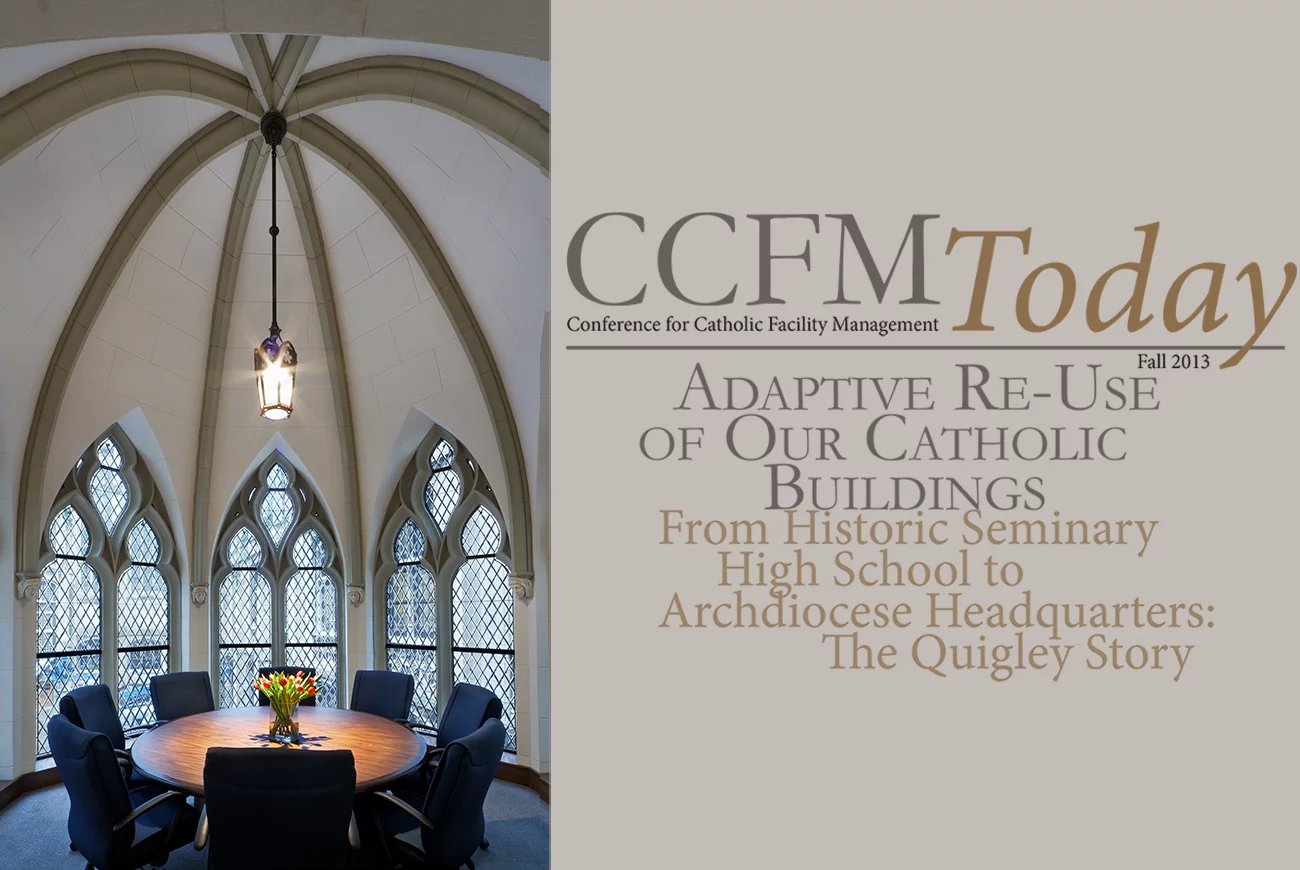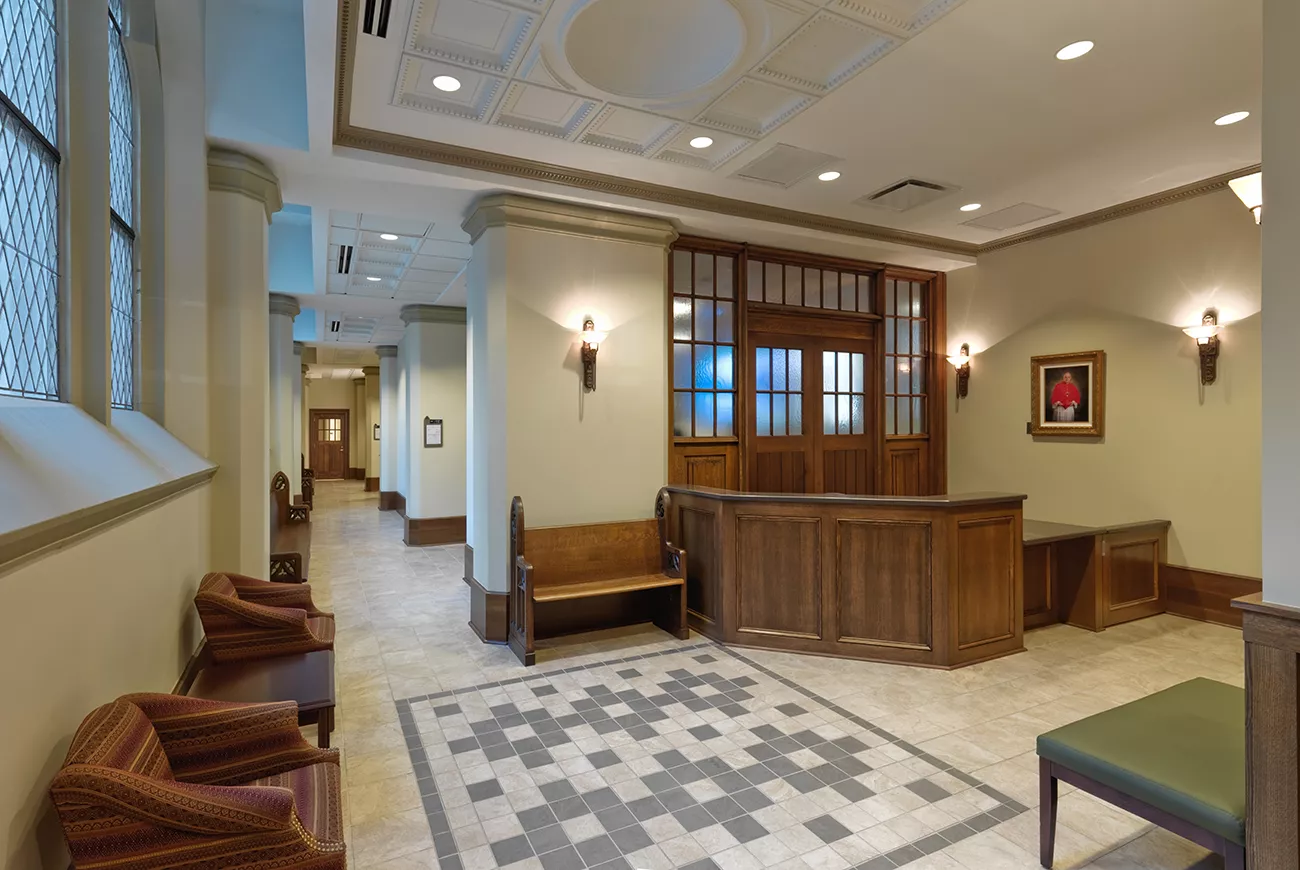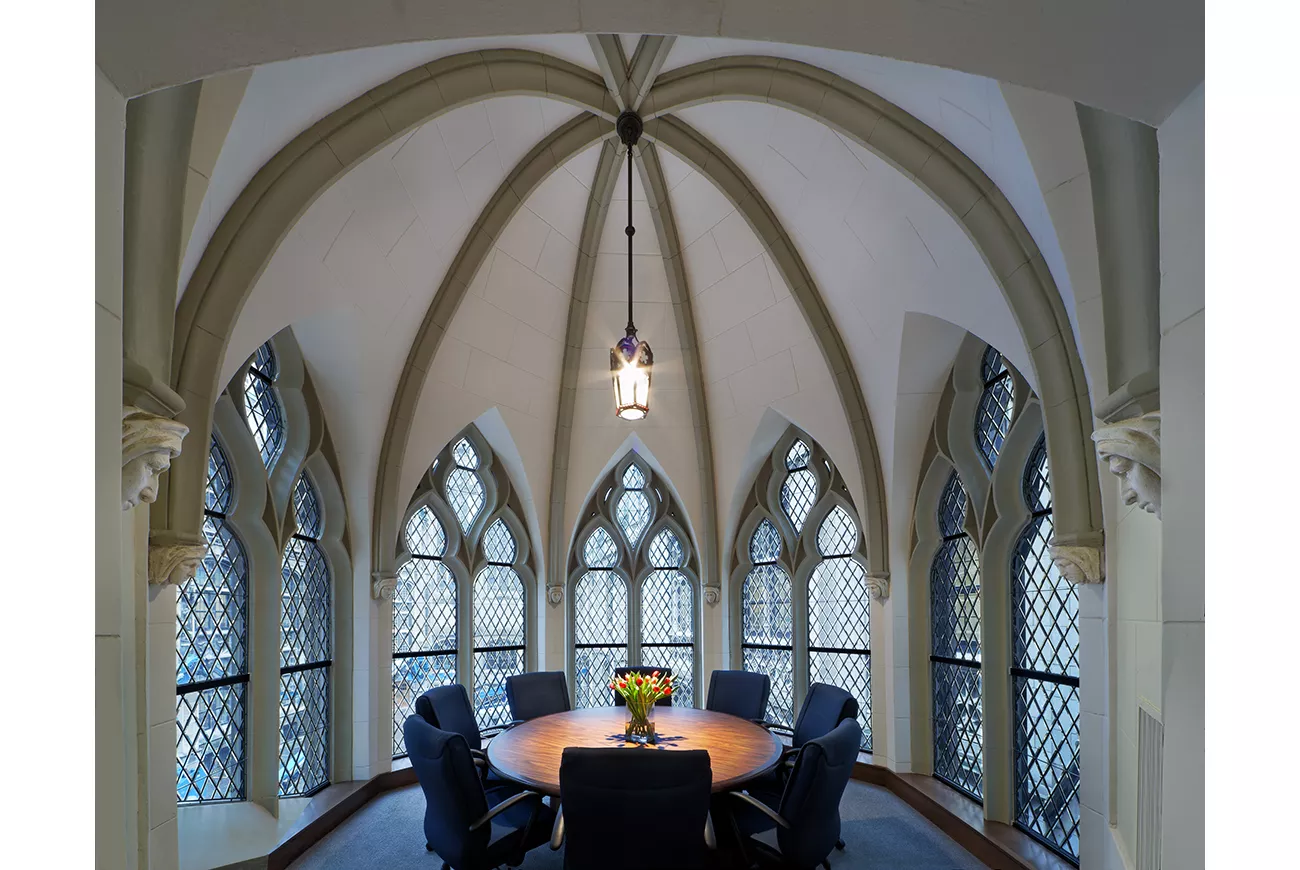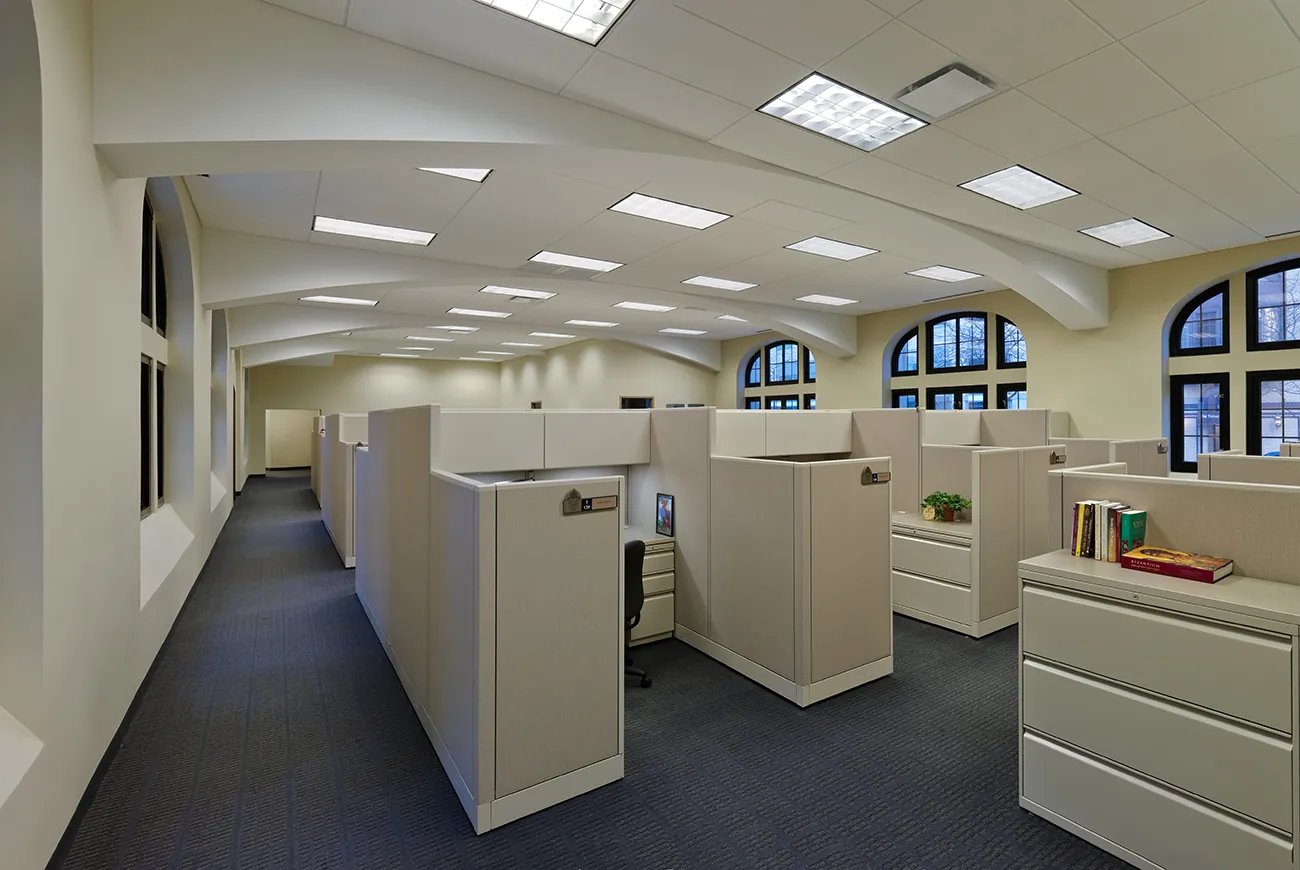
Dave Kuhlman, President of JNKA, recently authored a featured article for the Conference for Catholic Facility Management’s (CCFM) Fall 2013 publication; The article focuses on the Archbishop Quigley Center and it’s transformation from a pre-seminary high school to the administrative headquarters for the Archdiocese of Chicago.
Quigley Preparatory Seminary, originally designed by Gustave Steinbeck and Zachary Taylor Davis, was one of Cardinal Mundelein’s first projects when he became the Archbishop of Chicago in 1916, and at its dedication in 1920 a local newspaper declared that Quigley would be “among the most beautiful (buildings) in Chicago”. It has been an architectural marvel in the archdiocese ever since and was placed on the National Registry of Historic Places in 1996. Regretfully, due to reduced student enrollment and associated financial challenges, the school closed in 2006. However, recognizing the historical and architectural significance of the building, the archdiocese decided to convert the building into the Archbishop Quigley Center, a new pastoral center and administrative headquarters for seventeen departments and 275 employees of the Archdiocese of Chicago. Designed by Jaeger Nickola Kuhlman & Associates Architects (JNKA) and completed in 2008, this adaptive-reuse project included a full interior re-design of all four levels of the 86,700 s.f. building. At the beginning of the design process, Francis Cardinal George specifically requested that the design “maintain the building’s original gothic integrity while seeking to eliminate the elements which made it distinctly a school.” After a lengthy programming process involving meetings with representatives from each department, it was clear that the existing building’s floor area could not meet the spatial demands of all seventeen departments. So in addition to adapting the building to its new use, we had to identify creative yet affordable ways to add additional space to all four levels of the building, which ultimately included infilling a basement level swimming pool, converting the former school gymnasium into two floors of office space, transforming a stair tower into three stacked conference rooms, and designing a three story in-fill addition in an existing light well over the original boiler room. In the end, we managed to create over 10,000 s.f. of new space without impacting the historic exterior design of the building.

The interior design required a complete demolition of all the existing classrooms and support spaces to free up the interior, which provided the necessary flexibility for achieving the programmatic requirements. Each area was then designed to meet the unique needs and requirements of each department, with a mixture of open office spaces with systems furniture and enclosed private offices with traditional furnishings. The department serving the Cardinal Archbishop and the senior staff of the archdiocese was designed in the space of the original school library and features a restored cathedral ceiling with exposed trusses, plaster groin vaulting, arched wood doors, restored light fixtures, and new custom designed exterior glazing with symbols of the Catholic faith (by Daprato Rigali Studio). The building was also made fully handicap accessible with the integration of two new elevators; the original antiquated radiant heating system was removed and replaced with a multi-zoned forced air HVAC system; and all the outdated and non-code compliant electrical and plumbing systems were removed and replaced with updated systems, including fourteen new banks of bathrooms that were required by the Chicago Building Code.
Wherever possible, interior architectural elements of value were salvaged and restored, and in some instances they were relocated and integrated into the new design as architectural features. For instance, the former entrance to the school auditorium had three arched ornamental wood framed openings with glazed doors, sidelights and transoms. Two of these were integrated into the design of the Cardinal Archbishop’s office and the third serves as a backdrop to the receptionist’s desk in the new entrance lobby. The lobby was designed with wood trim, wainscoting, and plaster crown molding that incorporated existing interior details, and a new opening was created in the floor above to accommodate a new ornamental stairway accessing St. James Chapel on the second floor.

This stairway leads visitors to a newly enclosed chapel narthex featuring new gothic style ornamental wood screenwalls with three sets of the original wood doors. Modeled after the famed Sainte-Chapelle in Paris, St. James Chapel is the most beautiful and architecturally significant space in the building. Through a private donation it was restored to its original beauty and JNKA designed the new marble altar and ambo to compliment the existing fifty-foot tall marble reredos.
The renovation did not come without its share of challenges. As-built drawings were limited to a few of the original 1916 architectural drawings with no detailed information regarding the building systems, so a significant amount of structural exploration and testing had to be performed during the design and construction phases to complete the project. And one of the new elevators had to be located adjacent to the new main entrance lobby to provide access from a new exterior handicap entrance to all four levels of the building. The only available location for this elevator was an existing spiral stairway located near the main entrance, and the old adage about putting a square peg in a round hole now has a much more profound meaning for JNKA. From unexpected foundation conditions to modifications of the existing roof framing required to accommodate the elevator overrun, integrating this elevator was one of the greatest challenges of the construction phase.

The full demolition and construction process took eighteen months to complete and was followed by a restoration of the exterior of the building and a conversion of the former former asphalt courtyard into a Parisianstyle court with patterned stone pavers. From our perspective as a firm dedicated to serving churches and helping them to be good stewards of their resources, the decision to transform the former seminary high school into the Archbishop Quigley Center was the most sustainable and responsive act the Archdiocese of Chicago could have initiated to ensure that the legacy of the building continues into the future. The fact that this historic building has entered into its second century of service, revitalized by the new energy provided by 275 dedicated employees, reinforces Quigley’s legacy of providing a strong and inspiring Catholic presence in Chicago.

JNKA-Illinois (Chicago Office)
250 S Northwest Hwy, Suite 310
Park Ridge, IL 60068
Email: dkuhlman@jnka-architects.com
Ph: 847-692-6166 Ext. 223
JNKA-Texas (Austin Office)
8911 North Capital of Texas Hwy., Ste. 4200
Austin, TX 78759
Email: info@jnka-architects.com
Ph: 737-232-6610
JNKA-Florida (Ocala Office)
6317 NE 61st Ave. Rd.
Silver Springs, FL 34488
Email: smaish@jnka-architects.com
Ph: 352-713-4004
JNKA-Nevada (Las Vegas Office)
1700 Kiltie Way
Las Vegas, NV 89102
Email: info@jnka-architects.com
Ph: 847-692-6166 Ext. 223